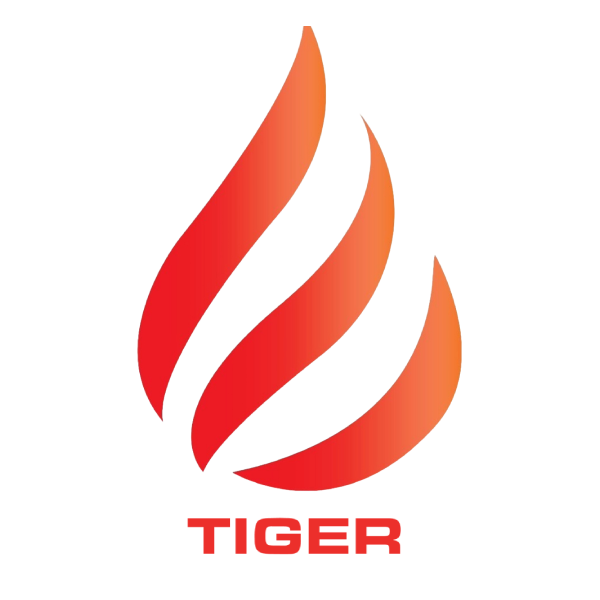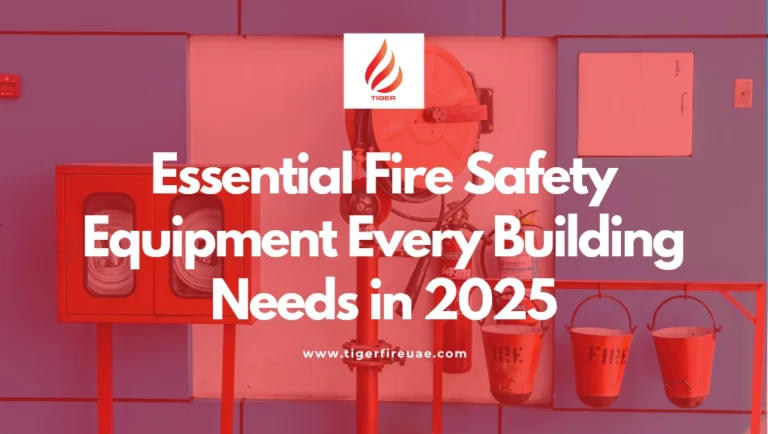Introduction
In 2025, ensuring the safety of occupants and protecting assets requires more than just fire awareness—it demands the right essential fire safety equipment. Whether you’re managing a residential tower in Dubai, a warehouse in Abu Dhabi, or a shopping mall in Sharjah, having modern, compliant fire gear is absolutely crucial. This guide explores the top equipment categories you should install to meet up-to-date standards, stay Civil Defense compliant, and enhance fire prevention and response.
1. Smoke & Heat Detectors
Smoke and heat detectors are the first line of protection—alerting occupants and triggering alarms before fires spread. Modern multi-sensor detectors effectively distinguish between smoldering smoke, cooking fumes, and real fire, reducing false alarms. Heat detectors safeguard harsh environments like kitchens or server rooms. These devices must be tested annually as part of maintenance protocols to ensure full functionality.
2. Fire Alarm Control Panels
The control panel is the system’s brain, managing detectors, output signals, and emergency communication. Whether you’re installing addressable systems with pinpoint location alerts or conventional panels for simpler setups, it’s important that panels meet UAE Civil Defense standards and integrate well with building automation systems for synchronized responses during emergencies.
3. Manual Call Points & Alarm Sounders
Manual call points (break-glass units) and alarm sounders allow people to raise alerts manually during emergencies. Strategically placed in corridors, exits, and high-risk zones, they have clear visual markers and sturdy enclosures built to withstand environmental extremes. Alarm sounders—either sounders or combined bells—should reach audible levels of at least 85 dB at the most distant point from the device.
4. Fire Extinguishers & Hose Reels
Portable extinguishers are essential across building zones, with placement every 30 meters being standard. A mix of CO₂, ABC, and water+foam types ensures you’re prepared for electrical, flammable liquid, or general fires. Hose reels, positioned near exits or in stairwells, enable more sustained firefighting efforts. Regular inspection and hydrostatic testing—at intervals specified by standards—are mandatory for safety and compliance.
5. Fire Suppression Systems
Depending on property type, you’ll need one or more suppression solutions:
- Sprinkler Systems (Wet/Dry Pipe): Automatically activate during fires and are critical for hotels, hospitals, factories, and warehouses.
- Clean Agent Systems (FM-200, Novec): Designed for data centers or archive rooms, they extinguish fires without residue or water.
- Foam Systems: Ideal for chemical storage or fuel-risk environments.
All systems must adhere to NFPA codes, be Civil Defense-approved in the UAE, and tested frequently for system integrity.
6. Emergency Lighting & Exit Signs
High-rise buildings, shopping centers, and public venues must include illuminated exit signs and backup-lit pathways. In case of power failure, properly installed battery-backed emergency luminaires ensure safe evacuation. These components are often overlooked until poorly-lit routes cause panic in emergencies.
7. Fire-Resistant Cabling & Conduits
To ensure alarms and suppression systems stay functional during fires, use fire-resistant cables and conduits. These maintain circuit continuity for up to 90 minutes under extreme heat, enabling critical equipment to continue delivering warnings, communication, and power during a fire event.
8. Fire Alarm Monitoring & Service Contracts
Having systems is half the battle—ensuring they work is the rest. Choosing a reliable vendor with 24/7 monitoring, rapid replacement parts, effective maintenance, and testing services (like Tiger Fire UAE) is vital. Maintenance and annual AMC programs ensure systems are operational year-round—ensuring compliance, reliability, and peace of mind.
9. Integrated Systems & Smart Upgrades
Looking ahead, building owners should consider smart fire safety:
- Wireless detectors for minimal disruption during retrofits
- Cloud-based alerts for remote monitoring
- Predictive analytics that detect performance drops before failures
- Integration with building automation, CCTV, HVAC, and security systems for comprehensive safety management
Investing in smart systems enables faster response, fewer false alarms, and smoother Civil Defense inspections.
10. Regulatory Compliance & Certification
Every piece of equipment—whether it’s a control panel, smoke detector, or suppression system—must carry UAE Civil Defense approval. Other important certifications include:
- ISO 9001 (quality management)
- ISO 14001 (environmental standards)
- NFPA compliance (global reference)
- UL/CE marking where applicable
These certifications guarantee that your installation meets all regional safety and quality standards.
Maintenance & Inspection Schedule
To keep fire systems functional and compliant, regular servicing is mandatory:
- Monthly visual checks of extinguishers, hose reels, and detection devices
- Quarterly tests of alarm panels, backup systems, and call points
- Semi-annual testing of suppression systems and alarm functions
- Annual full system commissioning, Civil Defense compliance checks, and professional reporting under AMC
Hydro testing of extinguishers and cable integrity checks during comprehensive checks
Conclusion
With evolving UAE regulations and more complex building needs in 2025, essential fire safety equipment isn’t optional—it’s mandatory. From detectors and suppression systems to smart integrations and maintenance contracts, equipping your building with the right fire protection gear is just the first step. Partnering with certified suppliers and maintaining systems consistently ensures lives are protected—and businesses comply.

